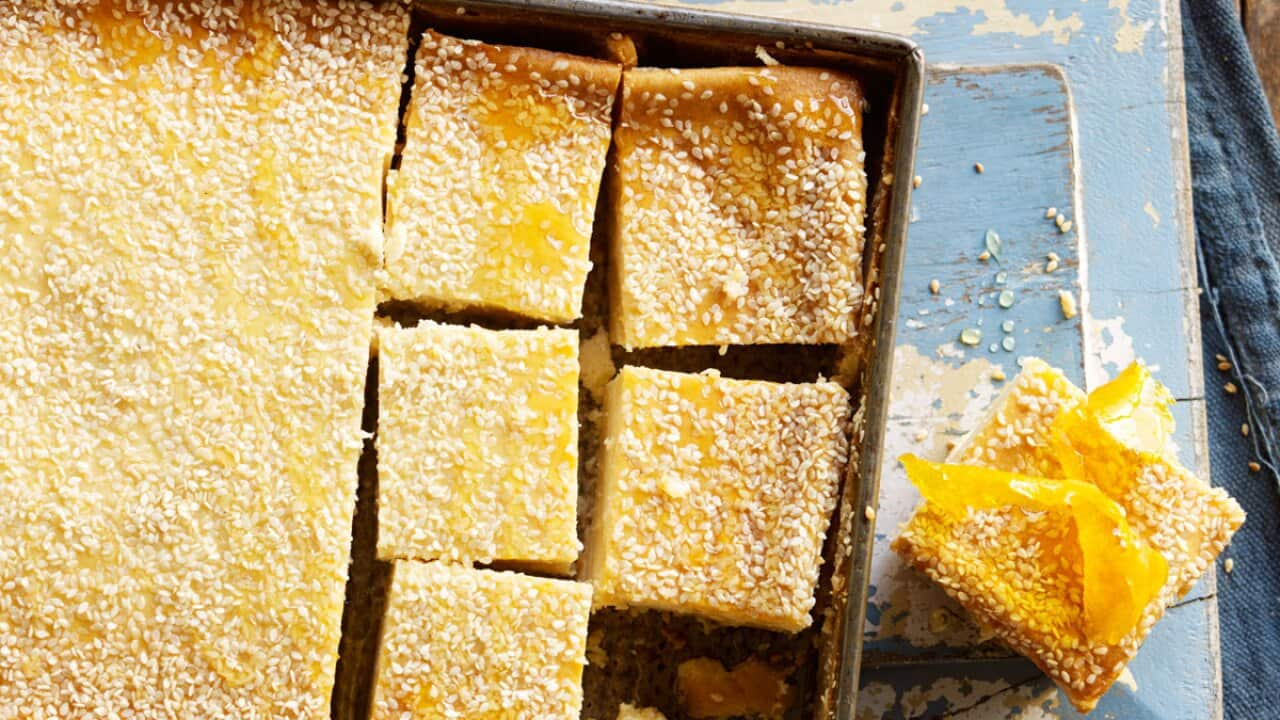St Basil’s Day marks the first day of a new year in Greece and other parts of Western Europe. It’s a day for revelry, blessings, feasting – and cake.
On this day, people across the country cut a slice of St Basil’s Cake in the hopes of securing good luck for the year ahead. The cake itself varies depending on region; some bake the brioche-style tsoureki (commonly enjoyed during Orthodox Easter) while others prepare the semi-sweet, puffy Vasilopita, or St Basil’s cake.
But one common thread ties them all together: a gold coin, which bestows luck on the person who finds it in their slice.
“I remember my cousins would always break out into fights and my yiayia would have to play referee,” tells Efrosini Costa.
“A lot of the time when you cut the cake, the coin would be found in between two slices, or fall out and onto another piece once the cake was lifted, and there was always fights over that.”
It wasn’t just good fortune that the coin (often a two-dollar coin wrapped in aluminium foil - although you can buy special , too) secured its owner, 29-year-old Costa explains.
“Sometimes, if you got the coin, my pappou (grandfather) would give you money as well. The older relatives would give money too, so it was a big deal – you felt like you won the lottery.”
According to one story, the tradition of the gold coin began when St Basil – regarded as a great leader and thinker of the Orthodox Christian church - summoned the citizens of ancient Caesarea to raise a ransom payment to stop the siege of the city. Once it was raised from a mix of gold and jewels kindly donated by the city’s people, the enemy was so embarrassed that he called off the siege without collecting payment. When it came to returning everyone their goods, St Basil was stumped, so he baked them all into loaves of bread (some stories cite pies) and handed them out across the city. Miraculously, everyone was returned their share.
Made from humble pantry staples including flour, eggs, milk and sugar (Costa’s family flavours their Vasilopita with fresh orange juice), the cake is inexpensive and quick to make, and often served warm.
When it came time to cut the Vasilopita at her yiayia’s house in Sydney’s inner west, Costa recalls the mood dimming slightly.
“It was very ceremonial,” she tells. “We would all become very quiet and my yiayia would get up and stand next to my grandfather. She would say out loud: ‘the first piece is for the house. Next is for pappou.’ She would call everyone’s names from eldest to youngest, blessing us all.”
In some households, Christ, the Virgin Mary and St Basil himself are recalled at cutting time.
Recipes for the Vasilopita vary from family to family, with some favouring a more savoury version. Decorations alternate, too; some use icing sugar or blanched almonds to spell out the numerals of the year ahead, and others prefer to leave the cake top bare.
“Sometimes, my yiaya wouldn’t make the sweet version, so as kids, we didn’t really want to eat it,” Costa tells. “We’d just smash it to smithereens looking for the lucky coin. But my yiayia had a rule: if you were taking part, you had to eat your slice.”
Many families cut their St Basil’s cake when the clock strikes midnight and ticks over into the New Year, but the Costas cut theirs after a St Basil’s day feast. The menu would always centre around lamb, either cooked on the spit or prepared as souvlakia on the barbecue.
“There was always a lot of food – New Year’s Day is a big deal,” Costa says.
Come dessert time, melomakarona (honey-soaked walnut biscuits) and the short, buttery kourabiethes would usually accompany the cake.
“It was one big, progressive lunch – you’d go from one grandmother’s house to the other grandmother’s, and then to visit aunties and uncles, so you usually had more than one chance to win the lucky coin. The odds were actually quite good.”







